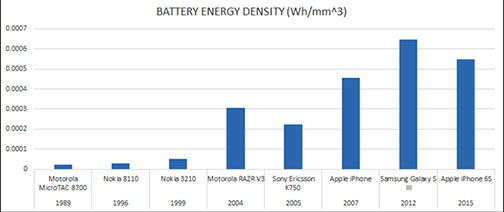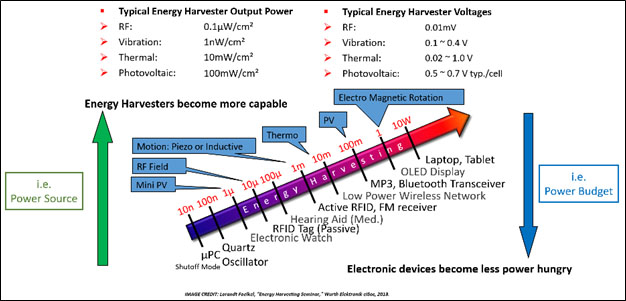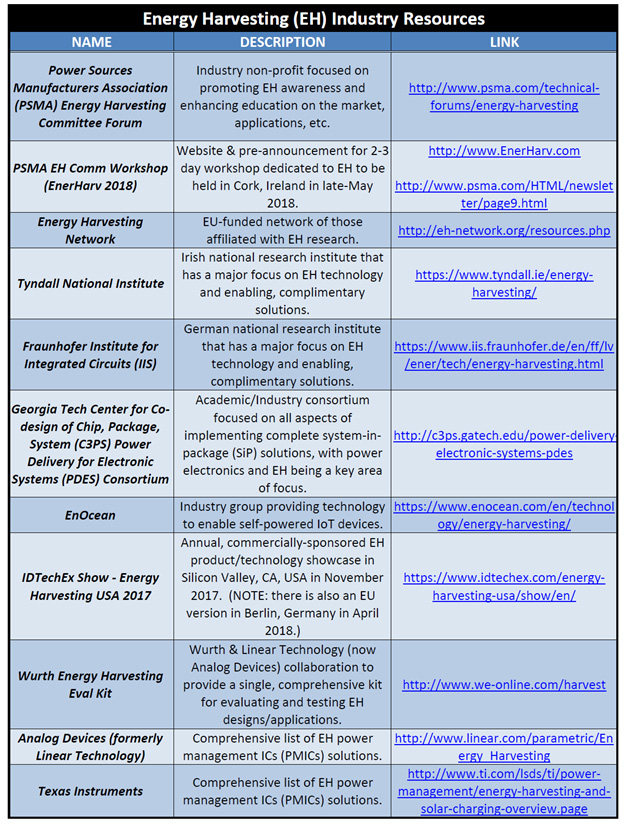Contributed Commentary by Brian Zahnstecher, Sr. Member of the IEEE, and the Principal of PowerRox
October 5, 2017 | In just about any application in the world of electronics, energy storage plays an important factor. Whether it be a battery that limits charge time or life of portable electronics, a Telecom’s capacity to sustain hold-up in a catastrophic situation, a data center’s ability to reduce the power bill, or a sensor’s ability to capture, analyze and transmit key telemetry data from a very harsh, potentially inaccessible environment. In just about any market or vertical we have encountered at PowerRox or in previous, professional lives, there is a maniacal focus on increasing the density of energy storage solutions (as well as power electronics density) in electronic gizmos. Thanks to some very high-profile incidents with lithium-ion batteries, safety is a receiving an ever more scrutinizing eye, but this can still come somewhat at odds with the desire to push energy densities.
Energy storage will certainly always play a role in the architecture and implementation of electronics though how this is executed is due to change considerably. At this point, we should be sure to note that semantics regarding different energy storage modalities and what actually constitutes an energy storage solution is not pertinent to the scope of this article so these terms will continue to be used in the general sense throughout the article. The only real specific class of device that is targeted by this analysis is the battery. Most of what is discussed here focuses on primary batteries though there is certainly a lot of applicability to secondary batteries as well. At the end of the day, our real goal should be the complete mitigation of energy storage devices that generate massive amounts of garbage, contain hazardous substances (both to humans and the environment), and present short-term safety hazards (negative localized thermal events). In this author’s experience, it is typically the energy storage components that provide a hard limit on the capabilities of a design/application, are in the critical path of quality and reliability, have the longest component lead times, and are of the more costly items in the Bill of Materials (BOM). In a utopian world that is no longer limited by a finite energy source, the floodgates will open to the amount of applications and devices enabled by disaggregating the restrictions imposed by batteries. One should also note this is not limited purely to portable devices, which will be discussed in more detail later in the article.
Now before you label me a hypocrite for both stressing the criticality of energy storage and the need to mitigate it, please consider a different perspective on design methodology. What if the architecting or design process was approached with a completely different strategy from inception? Could you imagine creating system power budgets with negative 40 percent margin (in other words, the energy storage is only designed to meet 60 percent of the total system need)? As a follow-up to the May 17, 2017 keynote presentation “Energy Harvesting is Changing the Battery Landscape from Consumer to 5G” given at Battery Power 2017 in Dallas, TX, it is necessary to elaborate upon this content and dig a little deeper into how a focus on the power electronics and utilization of power yields the most benefits in terms of overall power efficiency. This benefit can be so great that scavenging some of that power budget from free, ambient sources becomes feasible to supplement (or ideally provide) the full power need. Combining these concepts with the blossoming, energy harvesting (EH) production ecosystem that exists today will be what drives the need for new thinking in this area and therefore the future of batteries.
First thing is to address a key concept that was touched upon earlier, which is that a bigger, denser (in terms of energy) battery is an awful design goal for those designing systems and products because it puts us on the perpetual path of greed, which is unsustainable in the long-term. I always like to use cell phones as the quintessential example of this point. Think about that whizzbang smart phone in your pocket compared to one you might have had a decade or more ago. There is no question the energy density of the battery in today’s phone is much greater than that of the one from days of yore (see Figure 1), but which one do you need to recharge more often? This is referred to as greed because it is a universal trend (in this author’s humble opinion), which applies to any electronics from the tiniest consumer devices to large, enterprise servers. Essentially, the more power that is made available, the more features, ASICs, and other power-hungry components will be packed in to drain that power ever-quicker. This exemplifies the point that only a maniacal focus on reducing power consumption, not increasing available power, is the methodology for long-term success.

To go a step further, the focus needs to go from the blatantly obvious concept of reducing power consumption to the philosophies (or religion, in my case) of intelligent power management (IPM). The former is something that everyone from system builders to component vendors to even software and financial folks pay lip service to, but the latter refers to tangible, actionable strategies for accomplishing a reduction in power consumption. To give another very simple example, I am astounded how many people leave their portable device screens on when not using them or take advantage of auto brightness settings. As a frequent traveler, I have often engaged with folks asking me how I am working on extending their battery life (once they find out what I do for a living) and I tell them I am a miracle worker that will extend it by 20 percent to 30 percent before their very eyes without any technological innovations in battery chemistries, then I reach over to their phone and hit the button that turns the screen off and/or educate them on auto brightness, turning off functions that use a lot of radio frequency power amplifier (RF PA) consumption, etc. Saving consumers from themselves is a completely different topic that is easier said than done and exploring how we can implement IPM techniques is beyond the scope of this article, but is important to explore as product development stakeholders to enable a far more amenable point of inflection between a decreasing power budget and an increasing power source.
This concept of the point of inflection between power source and load is simple, yet important notion to internalize in product design because that point is the boundary between success and failure of your product or system development. The reason is it goes to the heart of the difficult design tradeoffs that impact the success of every product development. Even if folks have expertise in power electronics design, it amazes me how often the majority of design cycles/resources are misappropriated. In a gross overgeneralization, the typical product design process neglects optimizing power utilization at project onset and only addresses this when the power budget becomes a critical path inhibitor to the development (could be related to battery option limitations, physical volume, thermals, supply chain, or anything else) or there is a field issue post-release. Power electronics design and optimization should be a pivotal area of investment in the very early stages of the product development cycle because it is much easier to do in the beginning than down the line. Furthermore, several IPM optimization techniques are much lower hanging fruit to implement than attempting to figure out how to increase your primary power source, thus avoiding a lot of kneejerk action and subsequent penalties (development cost, cycles, time-to-market, quality, reliability, customer satisfaction, revenue, and stress).
Now, we should take a minute to understand just what EH is and what is it not. This can be an exercise in semantics, but to this author, EH is capturing (sometimes called scavenging) free, ambient energy from a source that was not originally intended for the application use case. Examples include a photovoltaic cell that captures solar irradiance or a thermoelectric generator that converts a temperature differential between an IC and the ambient temperature into a potential source. Every form of energy physics affords us can be captured and used from kinetic to RF. Wireless power transfer (closely-coupled inductive charging, RFID) is not EH because the target loads are receiving power from a directed source, typically coming from offline, which really means one is operating from the wall, where one of the “wires” happens to be a wireless connection. In a way, wireless power transfer is actually the opposite of EH since it decreases end-to-end system efficiency, where scavenged energy only increases.
There are some common misperceptions about EH that should be dispelled. One is EH only provides a negligible amount of power and therefore has no practical use. Obviously, this can be highly dependent on the application, environment and EH source, but there are a surprising amount of use cases enabled by EH solutions that are traditionally thought of as being not applicable. We do not have the time to dig into every EH source and application here, but you may reference Figure 2. to get a rough idea of how the sources map to available power, potentials, and applications. Note: this is only to give a relative order of magnitude to assess the various EH opportunities and not meant to be used in calculations for your actual applications. Also, remember voltage sources may be scalable depending on the transducer.

Once convinced EH may have some usefulness in your application, you now need to properly prioritize how EH can provide the most value. EH is not an all-or-nothing proposition. Even if an EH source cannot completely replace your battery, it may be able to supplement or extend battery life. If you have a system or application that utilizes a standby or sleep state function, then you may be able to replace a standby power source with an EH source and mitigate the need for a totally extra power supply or supply output. This logic can be applied to develop a strategy or roadmap for implementing EH technologies in the short-, mid-, and long-term. Initially, your short-term EH strategy can be to supplement battery power and extend time between charges by 10 percent to 20 percent to help determine a business case for payback period, enhanced customer experience, or whatever. In the long-term, a goal should be the total mitigation of batteries that aligns with EH technology trends and matches that to the other portions of your applications that have major impact to the system power budget such as IC process node generations.
Another big, EH misperception is much of this technology is not at a technical readiness level for production applications and is more of an academic exercise. While there are a lot of academic resources dedicated to this technology space, there are also quite a bit of transducers, power management ICs (PMICs), storage, IP blocks, etc. from well-established and small companies alike. Typically, the PMIC is the key enabler for an EH solution and there are great parts from top-tier vendors that have been in production for over a decade. Some resources to help identify where you can go to quickly find a lot of these solutions are provided below. EH may not be as established any many other technology areas, but there is an existing, production ecosystem that is growing fast. Thanks to the excitement and investment in IoT, wearables, and wireless sensor networks the explosive growth in these markets provides the perfect storm to marry EH technologies to enabling applications.
Wireless sensor networks (WSN), particularly in harsh environments, is a fantastic application space for EH technologies. Most harsh environments have environmental extremes of temperature, pressure, and moisture, which can provide great sources of energy to harvest. Additionally, many of these harsh or industrial applications desire telemetry data from a source that is either inaccessible or highly undesirable (costly) to access. As a bonus, many of these WSN telemetry needs are very low power since the data tends to be low bandwidth and low frequency, making them a perfect candidate for EH. Markets such as the Oil & Gas sector or metals/minerals processing are outstanding contenders for these kinds of implementations.
Hopefully by this point, your curiosity for EH is piqued a little more than it was before reading the piece to the point that you may now consider the potential value of a battery mitigation strategy for your company/application. Assuming so, you may want to go a little deeper into the rabbit hole and investigate some resources to assist a more comprehensive examination of any of the aforementioned topics. A complete list is beyond the scope of this article, but there are some free resources to enable one to quickly take this investigation to the next level. Please find a brief list in Table 1 and note this author is neither compensated for mentioning nor is endorsing any specific products or groups referenced in the table.

In summary, investments in the optimization of power electronics and IPM techniques are a critical factor in enabling IoT, Wearable, WSN and 5G applications. Reducing power demand yields far more benefits than the relentless pursuit of a bigger battery. If massive amounts of sensor products are to have useful lives in application, then they need to operate for very long times (forever) without a recharge from the wall or even a battery change. EH is no longer a lab experiment and the ecosystem, while nascent, exists now! The sooner we plan the battery roadmap with EH in-mind, the better off we will all be.
There will be a workshop, EnerHarv 2018, that is completely dedicated to EH, sponsored by the Power Sources Manufacturers Association (PSMA) to be held the week of May 28, 2018 at Tyndall National Institute in Cork, Ireland. For more information, please visit www.EnerHarv.com or contact the author of this article.
Brian Zahnstecher is a Sr. Member of the IEEE, Chair of the IEEE SF Bay Area Power Electronics Society (PELS), and the Principal of PowerRox, where he focuses on power design, integration, system applications, OEM market penetration, and private seminars for power electronics. He has successfully handled assignments in system design/architecting, AC/DC front-end power, EMC/EMI design/debug, embedded solutions, processor power, and digital power solutions for a variety of clients. He previously held positions in power electronics with industry leaders Emerson Network Power, Cisco, and Hewlett-Packard, where he advised on best practices, oversaw product development, managed international teams, created/enhanced optimal workflows and test procedures, and designed and optimized voltage regulators. He has been a regular contributor to the industry as an invited speaker, author, workshop participant, session host, roundtable moderator, and volunteer. He has more than 13 years of industry experience and holds Master of Engineering and Bachelor of Science degrees from Worcester Polytechnic Institute.
PowerRox is a firm dedicated to solving power problems for those seeking to establish or enhance their position in the enterprise and consumer power electronics marketplace. We specialize in improving efficiency, increasing reliability, achieving cost reduction through hands-on support and training/seminars/workshops. We can solve problems in power supply design, power system development, system debug and test, cost/performance analysis, marketing, and re-design. We are committed to meeting all deadlines, performing on-budget, debugging/testing solutions to required levels, and doing the highest quality work possible.
For more information, contact PowerRox at www.powerrox.com.







